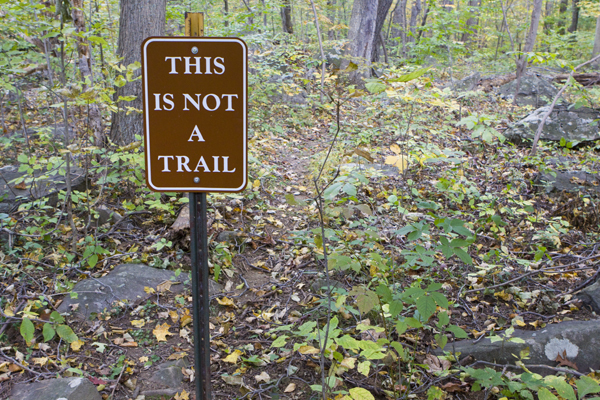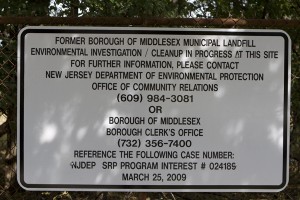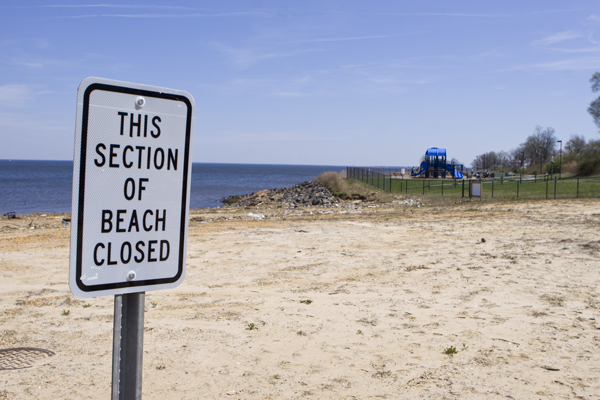
Raritan Bay Slag Superfund Site – children’s playground in background
[Updates below
EPA Region 2 Administrator Judy Enck, Congressman Frank Pallone, and local officials from Old Bridge held a press conference yesterday to discuss the cleanup of the Raritan Bay Slag Superfund site with concerned community members and environmental groups (see this and this and this for info about the site and this for press coverage. and NBC TV).
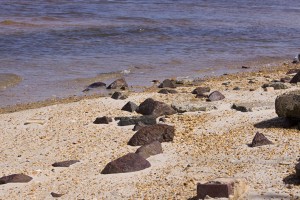
lead slag dumped on beach, leaches lead
The problems date back to the 1970’s. The beach is contaminated with extremely high levels of lead, as a result of construction of a sea wall and jetty with lead smelter slag waste. The lead has leached out of the slag and contaminated sand, sediment, and fish. Somehow, despite the fact that NJ DEP knew about the problem for years, this illegal waste disposal and construction was allowed to occur. Later, public funds were spent on a park on top of the contamination, so due diligence and site investigation failed. After all this, people were unknowingly exposed to high levels of lead for years, yet nothing was done. Cleanup cost (to taxpayers) is estimated at over $100 million. Someone should be in jail.
According to EPA:
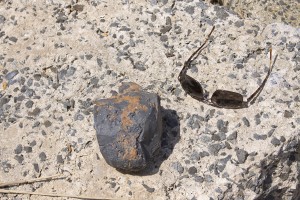
large chunks of slag are everywhere along beach
The Raritan Bay Slag site currently consists of three areas that contain lead slag from blast furnace bottoms, a byproduct of metal smelting, which was used to construct a seawall and a jetty along the southern shore of the Raritan Bay in Old Bridge Township and Sayreville, and areas of Margaret’s Creek in Old Bridge.
The first area is the Laurence Harbor seawall, adjacent to the Old Bridge Waterfront Park in the Laurence Harbor section of Old Bridge Township. The second area consists of the western jetty in Sayreville and extends from the Cheesequake Creek Inlet into Raritan Bay. The third is approximately 50 acres associated with Margaret’s Creek, where elevated lead levels have been identified.
Lead levels on the beach are in the 150,000 – 200,000 ppm range (that’s 15-20%!). The NJ DEP residential soil cleanup standard for lead is 400 ppm, so the beach exceeds safe levels by 500 times. Lead is a potent neuro-toxin that harms the development of children’s brains:(link)
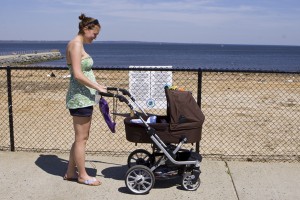
new mom strolls with infant past toxic lead beach. She knew nothing about the lead problems at the beach or in general.
Small children can be exposed by eating lead-based paint chips, chewing on objects painted with lead-based paint, or swallowing house dust or soil that contains lead.
Children are more vulnerable to lead poisoning than adults. A child who swallows large amounts of lead may develop blood anemia, severe stomachache, muscle weakness, and brain damage. If a child swallows smaller amounts of lead, much less severe effects on blood and brain function may occur. Even at much lower levels of exposure, lead can affect a child’s mental and physical growth.

moms strolls past high lead warning sign at Superfund site
Exposure to lead is more dangerous for young and unborn children. Unborn children can be exposed to lead through their mothers. Harmful effects include premature births, smaller babies, decreased mental ability in the infant, learning difficulties, and reduced growth in young children. These effects are more common if the mother or baby was exposed to high levels of lead. Some of these effects may persist beyond childhood.
The Star Ledger wrote a set up story that ran on Tuesday. As is typical, they focus on inconvenience to local beach-goers. They downplayed the public health risks – and didn’t even mention why lead is a health risk (which is why the beach is a Superfund site). But the Ledger did find time to mention real estate values and blast EPA for cleanup delays. In addition to ignoring the public health and environmental problems at the site, the Ledger coverage also didn’t report on the larger policy issue and how industry lobbyists and republican backers are blocking efforts to restore the funding of the Superfund program (lack of funds shifts the cleanup burden from polluters to taxpayers).
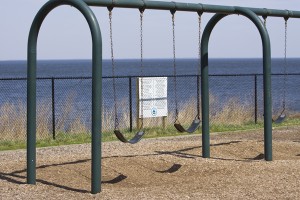
children play virtually on top of unstabilized lead Superfund site. The Park has not been completely sampled to determine lead levels, yet remains open.
Pallone and EPA officials met with a small group of residents after the press conference and site tour. I missed it to take my own tour but returned an hour later to listen to the finish.
A well informed and angry resident asked EPA why – with all the evidence – they had not taken enforcement and cost recovery actions. As reported in the Courier-News story:
The jetty and seawall were made from lead slag from blast furnace bottoms, a byproduct of metal smelting. A letter on file with the state Department of Environmental Protection on National Lead stationery and dated from the 1970s states that a trucking firm was taking lead from a National Lead plant and dumping it at the sites.”‘ (link)
EPA was asked point blank why they were not going after NL Lead and the trucking firm (the same company that built the sea wall).
***EPA lamely replied: “We don’t get sites cleaned up by going to court”. –
EPA surrendered enforcement *litigation options – just what the polluters like to hear! Failure to sue polluters is inexplicable given the evidence in this case, especially given that Superfund is broke and taxpayers are picking up the cleanup tab.
[***Update: This may get longer than the original post, but please read as this is important. I received a call today from EPA Region 2 to explain that I got the facts and EPA’s position on enforcement and the taxpayer tab wrong. EPA advised me that: 1) Superfund enforcement in this case is cost recovery for the cleanup; 2) EPA is researching and will soon name “potentially responsible parties” (PRP’s) (the first step in the cleanup cost negotiation and settlement process); 3) EPA will do cost recovery; and 4) funding has been authorized for remedial investigation and removal.
I try hard to be accurate. While I appreciate EPA’s efforts to assure the public that the facts and their positions are communicated clearly, I will note the following in response to EPA’s clarification:
1) my post provided a linked to EPA’s own press statement and internet links. EPA’s press statement and program links said nothing about: a) enforcement policy; b) the status of identifying or naming PRPs and RPs; c) EPA’s cost recovery, treble damages, and natural resource damage restoration & lost public use claims plans for the site; and d) a commitment to a settlement timetable. If EPA wants good information provided to the public, then they need to sharpen their own press releases and web materials instead of relying on correcting bloggers (I am good, but not that good!);
2) I quoted EPA Walter Mudgan accurately, and noted that I had not been in the briefing for the first hour (so I may have missed something). I spoke with Mudgan privately immediately after he made that statement and he did not clarify it;
3) EPA has multiple statutory enforcement tools. In addition to RCRA and Clean Water Act enforcement authorities that are punishment oriented, as opposed to Superfund remediation oriented (that Region 2 failed to note), EPA has at least 4 Superfund cleanup oriented enforcement options. These options include issuing unilateral Administrative Orders and pursuing litigation. EPA has had sufficient time to complete investigation, name PRP’s ,and issued PRP notification letters. If they were not ready to have done so for the press conference, then EPA should have – in writing – made their intentions explicit regarding their overall cleanup plans, timetables, status and source of funding, and enforcement/settlement principles, including the specific statutory authority they would rely on. click on and See EPA – Interim CERCLA Settlement Policy
VXII. Targets for Litigation
The Regions should identify particular cases for referral in light of the following factors:
-substantial environmental problems exist:
-the Agency’s case has legal merit;
-the amount of money or cleanup involved is significant;
-good legal precedent is possible (cases should be rejected where the potential for adverse precedent is substantial);
-the evidence is strong, well developed, or capable of development;
-statute of limitations problems exist;
-responsible parties are financially viable.
The goal of the Agency is to bring enforcement action wherever needed to assure private party cleanup or to recover costs. The following types of cases are the highest priorities for referrals:
-107 actions in which all costs have been incurred:
-combined 106/107′ actions in which a significant phase has been completed, additional injunctive relief is needed and identified, and the Fund will not be used:
-106 actions which will not be’ the subject of Fund-financed cleanup.
Referrals for injunctive relief may also be appropriate in cases when it is possibile, that Fund-financed cleanup will be undertaken. Such referrals may be needed where there are potential statute of limitation concerns, or where the site has been identified as enforcement-lead, and prospects for
successful litigation are good.
This would facilitate shaping public and PRP expectations for cleanup and enforcement response. Per EPA policy:
EPA has adopted an “enforcement first” policy for removal and remedial actions at CERCLA sites. This means that when PRPs for a site have been identified, EPA typically will first pursue the PRPs to conduct the site response rather than conduct the cleanup with Superfund money. EPA may seek to obtain PRP participation through settlements, unilateral orders, or litigation. In addition, EPA may take the lead for cleanup activities and seek to recover its costs from PRPs. At 95 percent of non-federal facility Superfund sites where there are known viable, liable parties, the Agency endeavors either to reach a settlement or take an enforcement action before the start of a remedial action.
EPA still hasn’t made their enforcement response actions for the site absolutely clear.
All that being said, while my original post was factually accurate and EPA could have done a lot better, upon reflection my sense is that I was – at this stage of the cleanup – overly critical of EPA and I may have overstated the taxpayer liability at this site. But, in saying this, I am essentially giving EPA a lot of trust – lets hope they can honor that trust.
End update]
Update #2 – 4/18/10 – I gladly stand corrected for below criticism of media for ignoring this story. Asbury Park Press: “Polluter pays” tax sought to fund cleanup of Superfund sites”
Update #1: 4/9/10 – note important clarification above on EPA enforcement policy]
Of course, we rarely read about or see what’s really important in the press coverage.

proud mom and young son – in background, EPA public health warning sign and Superfund cleanup contractors.

xxxx











